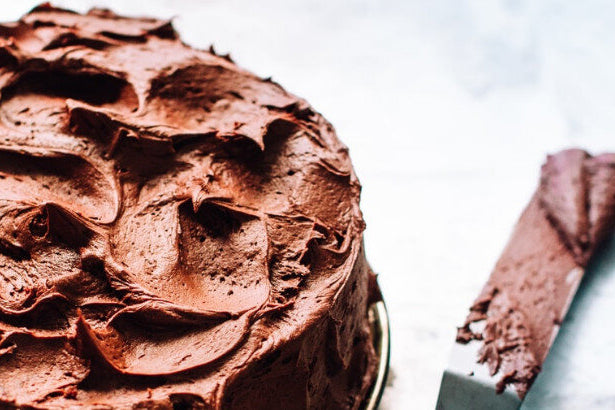


Attention!
Due to the COVID-19 outbreak we are no longer accepting or fulfilling NATIONAL orders for the time being.
If you are looking for New York City Grocery Delivery please click here.



Due to the COVID-19 outbreak we are no longer accepting or fulfilling NATIONAL orders for the time being.
If you are looking for New York City Grocery Delivery please click here.

The following recipe is from Sandor Katz’s Fermentation Journeys by Sandor Ellix Katz (Chelsea Green Publishing, October 2021) and is reprinted with permission from the publisher.
Fermenting vegetables was my gateway into fermentation. I typically recommend it as a first fermentation project because
the process is so straightforward and intrinsically safe; because you can enjoy results relatively quickly; because we
all need more vegetables; and because fermented vegetables are so delicious, nutritious, and rich in probiotic bacteria.
Ever since that first batch of sauerkraut decades ago, I have had vegetables fermenting in my kitchens. Over the
years, I have experimented with different styles and continued to learn about new approaches. Though the basics of the
process are extremely simple, fermentation is versatile and can be varied in nearly infinite ways.
Sauerkraut Chocolate Cake
Many people seem shocked at the idea of a chocolate cake made with sauerkraut. But it is quite delicious and moist, and the sauerkraut blends into the sweet cake just like the shredded carrot in a carrot cake or the zucchini in a zucchini bread. The sourness of the kraut is mostly neutralized as it reacts with the alkaline baking soda, and the reaction between them is part of what rises the cake.
Sauerkraut chocolate cake was first served to me at a wonderful fermentation-themed feast in Amery, Wisconsin, where the dessert course was prepared by pastry chef Leigh Yakaites. Leigh told me her grandmother, from Fond du Lac, Wisconsin, used to make sauerkraut chocolate cake when Leigh was young, though “she of course didn’t tell the kids it had sauerkraut in it until we had eaten it.”
Leigh didn’t follow a family recipe, but she directed me to one published online by Canadian food blogger Bernice Hill, on her website Dish ‘n’ the Kitchen (dishnthekitchen.com). Because I am constitutionally unable to follow a recipe, I have adapted hers, and I offer this as a guideline for you to adapt further.
Spread jam between the layers; I thought marmalade worked especially well, but any fruity jam would be great. Leigh served it covered with a fantastic chocolate balsamic glaze—her recipe for that is included. A simple chocolate icing or whipped cream would be fine
as well.
As for the sauerkraut, I recommend a very simple and plain kraut without a lot of additional ingredients beyond finely shredded cabbage and salt.
About 2 hours including cooling time
Equipment
Two 8-inch/20-centimeter round cake pans
Parchment paper
Whisk or electric mixer
for two layers of an 8-inch/
20-centimeter round cake
³/4 cup/170 grams butter,
room temperature
1¹/2 cups/300 grams sugar
3 eggs
1 teaspoon vanilla extract
2¹/4 cups/380 grams white flour
¹/2 cup/75 grams cocoa powder
1 teaspoon baking soda
1 teaspoon baking powder
¹/2 teaspoon salt
1 cup/160 grams sauerkraut, drained and squeezed of excess juice, and very finely shredded
¹/2 cup/65 grams cacao nibs (optional)
¹/2 cup/120 milliliters jam of your choice to spread between the layers
Ingredients
for the Chocolate
Balsamic Glaze
²/3 cup/160 milliliters
balsamic vinegar
3 tablespoons sugar
1.5 ounces/45 grams bittersweet baking chocolate, grated or cut into small pieces
Preheat oven to 350°F/175°C.
Prepare two 8-inch/20-centimeter round cake pans: Rub butter on interior surfaces, dust with flour, and line bottoms with parchment paper.
Cream the butter and sugar together, using a whisk or electric mixer, until smooth.
Add the eggs one at a time, mixing each one in until smooth.
Add the vanilla and mix until smooth.
In another bowl, combine the dry ingredients, then sift them slowly into the butter-sugar-egg mixture, mixing well with a spoon or spatula. Add 1 cup/250 milliliters of water, a little a time, as you stir it into a smooth batter.
Add the sauerkraut and cacao nibs (if using), and stir to mix
them in thoroughly.
Pour the batter into the two prepared pans.
Bake for 30 minutes, then stick a toothpick or fork into the center of one of the cakes to see if it comes out clean. If so, remove the cakes from the oven; if not, bake for another 5 minutes.
Allow the cakes to cool on a rack until they are cool enough to handle. Then remove from the baking pans and peel the parchment paper from the bottoms of the cakes.
For the glaze, combine the balsamic vinegar and sugar in a saucepan, whisking them together and heating until it is hot but not boiling. When the sugar is fully dissolved, remove from heat and whisk in the chocolate until it is melted.
Place one layer of the cake on a serving plate or cake stand, spread jam on top of it, then place the second layer on the jam. Pour the glaze over the top and sides of the cake.
Enjoy!